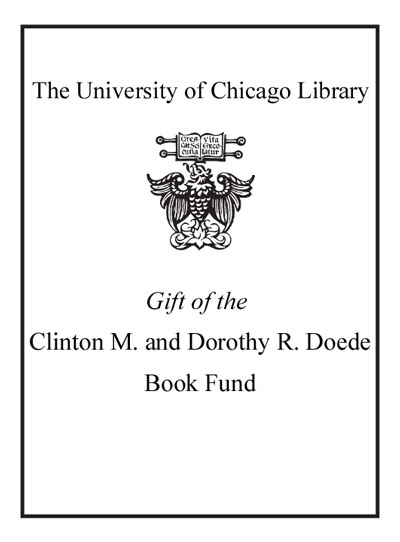Immunology and evolution of infectious disease /
Saved in:
| Author / Creator: | Frank, Steven A., 1957- |
|---|---|
| Imprint: | Princeton, N.J. : Princeton University Press, c2002. |
| Description: | x, 348 p. : ill. ; 24 cm. |
| Language: | English |
| Subject: | |
| Format: | E-Resource Print Book |
| URL for this record: | http://pi.lib.uchicago.edu/1001/cat/bib/4720616 |
Table of Contents:
- Acknowledgments
- 1. Introduction
- Part I. Background
- 2. Vertebrate Immunity
- 2.1. Nonspecific Immunity
- 2.2. Specific Immunity: Antigens and Epitopes
- 2.3. B Cells and Antibodies
- 2.4. T Cells and MHC
- 2.5. Summary
- 3. Benefits of Antigenic Variation
- 3.1. Extend Length of Infection
- 3.2. Infect Hosts with Prior Exposure
- 3.3. Infect Hosts with Genetically Variable Resistance
- 3.4. Vary Attachment Characters
- 3.5. Antigenic Interference
- 3.6. Problems for Future Research
- Part II. Molecular Processes
- 4. Specificity and Cross-Reactivity
- 4.1. Antigens and Antibody Epitopes
- 4.2. Antibody Paratopes
- 4.3. Antibody Affinity Maturation
- 4.4. Natural Antibodies--Low-Affinity Binding to Diverse Antigens
- 4.5. Affinity versus Specificity
- 4.6. Cross-Reaction of Polyclonal Antibodies to Divergent Antigens
- 4.7. T Cell Epitopes
- 4.8. Every Host Differs
- 4.9. Problems for Future Research
- 5. Generative Mechanisms
- 5.1. Mutation and Hypermutation
- 5.2. Stochastic Switching between Archival Copies
- 5.3. New Variants by Intragenomic Recombination
- 5.4. Mixing between Genomes
- 5.5. Problems for Future Research
- Part III. Individual Interactions
- 6. Immunodominance within Hosts
- 6.1. Antibody Immunodominance
- 6.2. CTL Immunodominance
- 6.3. Sequence of Exposure to Antigens: Original Antigenic Sin
- 6.4. Problems for Future Research
- 7. Parasite Escape within Hosts
- 7.1. Natural Selection of Antigenic Variants
- 7.2. Pathogen Manipulation of Host Immune Dynamics
- 7.3. Sequence of Variants in Active Switching from Archives
- 7.4. Ecological Coexistence of Variants within a Host
- 7.5. Problems for Future Research
- Part IV. Population Consequences
- 8. Genetic Variability of Hosts
- 8.1. Polymorphisms in Specificity
- 8.2. Polymorphisms in Immune Regulation
- 8.3. Problems for Future Research
- 9. Immunological Variability of Hosts
- 9.1. Immunological Memory
- 9.2. Kinds of Parasites
- 9.3. Immunodominance of Memory
- 9.4. Cross-Reactivity and Interference
- 9.5. Distribution of Immune Profiles among Hosts
- 9.6. Problems for Future Research
- 10. Genetic Structure of Parasite Populations
- 10.1. Kinds of Genetic Structure
- 10.2. Pattern and Process
- 10.3. Genome-wide Linkage Disequilibrium
- 10.4. Antigenic Linkage Disequilibrium
- 10.5. Population Structure: Hosts as Islands
- 10.6. Problems for Future Research
- Part V. Studying Evolution
- 11. Classifications by Antigenicity and Phylogeny
- 11.1. Immunological Measures of Antigenicity
- 11.2. Phylogeny
- 11.3. Hypothetical Relations between Immunology and Phylogeny
- 11.4. Immunology Matches Phylogeny over Long Genetic Distances
- 11.5. Immunology-Phylogeny Mismatch with Radiations into New Hosts
- 11.6. Short-Term Phylogenetic Diversification Driven by Immunological Selection
- 11.7. Discordant Patterns of Phylogeny and Antigenicity Created by Within-Host Immune Pressure
- 11.8. Problems for Future Research
- 12. Experimental Evolution: Foot-and-Mouth Disease Virus
- 12.1. Overview of Antigenicity and Structure
- 12.2. Antibody Escape Mutants
- 12.3. Cell Binding and Tropism
- 12.4. Fitness Consequences of Substitutions
- 12.5. Problems for Future Research
- 13. Experimental Evolution: Influenza
- 13.1. Overview of Antigenicity and Structure
- 13.2. Antibody Escape Mutants
- 13.3. Cell Binding and Tropism
- 13.4. Fitness Consequences of Substitutions
- 13.5. Experimental Evolution of Other Pathogens
- 13.6. Problems for Future Research
- 14. Experimental Evolution: CTL Escape
- 14.1. Cleavage and Transport of Peptides
- 14.2. MHC Binding
- 14.3. TCR Binding
- 14.4. Functional Consequences of Escape
- 14.5. Kinetics of Escape
- 14.6. Problems for Future Research
- 15. Measuring Selection with Population Samples
- 15.1. Kinds of Natural Selection
- 15.2. Positive Selection to Avoid Host Recognition
- 15.3. Phylogenetic Analysis of Nucleotide Substitutions
- 15.4. Predicting Evolution
- 15.5. Problems for Future Research
- 16. Recap of Some Interesting Problems
- 16.1. Population-Level Explanation for Low Molecular Variability
- 16.2. Molecular-Level Explanation for Population Dynamics
- 16.3. Binding Kinetics and the Dynamics of Immunodominance
- 16.4. Diversity and Regulation of Archival Repertoires
- 16.5. Final Note
- References
- Author Index
- Subject Index


